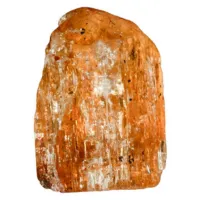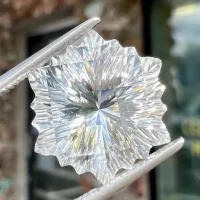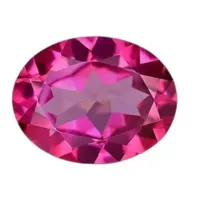Topaz Gemstone is one of the most versatile and popular gemstones in the world, known for its amazing range of colors, clarity and brilliance. With origins dating back to ancient civilizations, it continues to be a highly prized gem, prized for its beauty and durability. We dive into the world of Topaz gemstones, exploring different types, origins, colors and why they have such incredible value.
Table: types of topaz Gemstone
| topaz types | Origin | Colors |
| Imperial Topaz | Brazil | Golden orange, reddish-orange |
| Blue Topaz | USA, Switzerland | Light blue to deep blue |
| White Topaz | Sri Lanka, Russia | Colorless |
| Pink Topaz | Pakistan, Brazil | Light to deep pink |
| Mystic Topaz | Brazil, USA | Rainbow colors (treated) |
| London Blue Topaz | Brazil, USA | Deep blue, navy blue |
| Sherry Topaz | Mexico | Light brown, orange |
Different colors of topaz
Gemstone Topaz is quite common, coming in all colors, and many are associated with different origins or treatments. This gemstone with a beautiful variety comes in several colors from a golden glow of Imperial Topaz to vibrant hues of Mystic Topaz.

Imperial Topaz:
Imperial Topaz is one of the rarest and most precious variety with hues of golden yellow, orange, reddish brown. Traces of chromium give the pigment these vibrant colors. This exquisite gemstone is a unique of the Ouro Preto region of Brazil.
Blue Topaz:

Despite this, the blue variety is probably the most famous of all topaz varieties. Heat and radiation treatments are what give blue topaz its striking sky blue to deep London blue color. Primarily from the US, in Texas as well as in Switzerland.
White Topaz:

A clear, brilliant colorless variety of white topaz is prized as a substitute for diamonds. Reflective gemstone comes from sources like Sri Lanka and Russia.
Pink Topaz:

Rare natural pink topaz is mostly sourced in Pakistan and Brazil. Because the demand for pink topaz stones is high, most of the stones that are pink topaz have been heat treated to improve the color, and natural pink topaz is extremely rare and highly desirable.
Mystic Topaz:

Mystic Topaz is, in fact, famous for its iridescent, rainbow like appearance, which is produced by applying a thin titanium coating to a transparent topaz. The play of color as the gemstone catches the light, stunningly ever changing, is given to this gemstone through this treatment.
History and Origin of Topaz
Topaz has been a precious treasure for thousands of years, with its name likely derived from the ancient Sanskrit word “Tapas”, meaning fire. In ancient times, topaz was believed to have soothing properties and protect from evil. Some believed it could cure fevers and wounds. The ancient Greeks wore topaz for strength, while the Egyptians considered it a symbol of the sun god Ra.
The oldest known topaz mines were in Egypt on the island of St. John in the Red Sea, but today Brazil is the most important source of topaz gemstones. The mines of Ouro Preto in Minas Gerais, Brazil, have produced some of the largest and most valuable topaz stones in the world.
Why Is Topaz Valuable?
Topaz is appreciated for its durability (with a hardness of 8 on the Mohs scale), brilliance and variety of colors. The rarity of certain colors, such as imperial topaz and natural blue topaz, makes them particularly valuable. In addition, the ability of the topaz to be treated to enhance its color has increased its popularity in jewelry, making it accessible in different price ranges.
FAQs about Topaz Gemstone
1. What is the most valuable type of Topaz?
The most valuable Topaz is Imperial Topaz, which is renowned for its golden-orange and reddish hues. It is rare and highly sought after, primarily mined in Brazil.
2. How is Blue Topaz created?
While some blue Topaz occurs naturally, most Blue Topaz is created by treating clear Topaz with heat and irradiation. This process enhances the color, producing the popular light to deep blue varieties.
3. Where is the best Topaz found?
Some of the best Topaz is found in Brazil, specifically in the Ouro Preto region, which produces both Imperial Topaz and other varieties. The USA (Texas), Sri Lanka, and Pakistan are also known for high-quality Topaz.
4. How can you tell if Topaz is real?
Authentic Topaz can be identified by its hardness (rating 8 on the Mohs scale) and its brilliant luster. A jeweler can perform tests to confirm whether a Topaz stone is natural or synthetic.
5. Is Topaz suitable for everyday wear?
Yes, Topaz is a durable gemstone, making it suitable for everyday wear. However, care should be taken to avoid harsh blows as it can still fracture under extreme pressure.
References:
- Gem Society: International Gem Society
- Gemological Institute of America: GIA.edu
- Gemselect: Gemselect.com


2 comments
Thanks for sharing. I read many of your blog posts, cool, your blog is very good.
Thanks so much for your kind words! I’m really glad to hear you’re enjoying the blog. If there’s a specific gemstone or topic you’d love to read more about, feel free to let me know. I’m always updating the site with new guides and tips on gems, crystals, and jewelry care — hope to see you back soon on gemsstudy.com! 😊💎